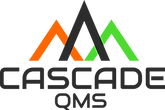RAVS stands for Review and Verification Services, a key component of the ISNetworld contractor compliance platform. ISNetworld acts as a bridge between contractors and hiring clients (often large operators in industries like oil and gas, utilities, and construction), helping to ensure that contractors meet strict health, safety, and environmental (HSE) standards.
RAVS is the process where ISNetworld requires contractors to submit written safety programs that reflect how the company manages specific safety and regulatory requirements. ISNetworld reviews these programs to verify that they meet both regulatory standards (like OSHA) and the specific requirements of the hiring client.
Why Are RAVS Important?
Contractors seeking to work with major companies in high-risk industries need to prove that they have effective and compliant safety programs in place. RAVS submissions are used to:
✅ Demonstrate Regulatory Compliance: Ensure that your company follows OSHA, EPA, and other industry-specific safety regulations.
✅ Meet Client-Specific Requirements: Hiring clients often have additional safety expectations beyond basic regulatory requirements.
✅ Improve ISNetworld Score: A higher RAVS score strengthens your overall ISNetworld grade, making you more attractive to hiring clients.
✅ Avoid Worksite Delays: If your RAVS submissions are incomplete or rejected, it can delay project approvals and create costly downtime.
Without successful RAVS submissions, contractors risk losing bidding opportunities and facing project delays.
How the RAVS Process Works
The RAVS process follows a structured path from submission to approval:
- Identification of Required Programs
Once a contractor registers with ISNetworld, the platform generates a list of required written programs based on:
- The type of work being performed
- The geographic location
- The specific safety requirements of the hiring client
- Program Creation and Submission
Contractors must create and upload written programs that reflect the specific safety measures and operational procedures required. These programs need to be detailed and tailored to match both regulatory and client expectations.
- Review and Scoring
ISNetworld reviews the submitted programs for:
✔️ Completeness (Does it address all necessary safety elements?)
✔️ Accuracy (Is the content aligned with industry standards?)
✔️ Client-Specific Requirements (Does it match what the hiring client wants to see?)
- Approval or Rejection
- If the program meets the requirements, it is approved, and the RAVS score increases.
- If the program is missing key details or fails to meet standards, it is rejected, and the contractor is asked to revise and resubmit.
Common RAVS Requirements
While RAVS requirements vary depending on the industry and hiring client, some of the most frequently required written safety programs include:
✅ Fall Protection
A fall protection program must outline how employees are protected from falls on elevated surfaces, including the use of harnesses, guardrails, and safety nets.
✅ Hazard Communication
This program should describe how hazardous chemicals are labeled, stored, and handled, along with employee training requirements.
✅ Heat Illness Prevention
This program explains the measures taken to protect employees from heat-related illnesses, including hydration, shade, and rest breaks.
✅ Emergency Action Plan
An emergency action plan should cover how employees are to respond to fires, medical emergencies, and other on-site incidents.
✅ Drug and Alcohol Testing
A drug and alcohol policy must detail the company’s testing procedures and consequences for violations, ensuring that employees are fit for work.
Why RAVS Are Rejected
One of the biggest frustrations contractors face is having their RAVS submissions rejected. The most common reasons for rejection include:
❌ Missing Details: Programs that are too vague or fail to address specific regulatory requirements.
❌ Incorrect Terminology: Using the wrong language or terminology can lead to immediate rejection.
❌ Incomplete Programs: Missing critical sections like training requirements or corrective action plans.
❌ Mismatch with Client Expectations: Failing to meet the specific formatting or structural guidelines requested by the hiring client.
How Long Does the RAVS Process Take?
The time required to complete the RAVS process varies depending on several factors:
- Program Complexity: Simple programs like hazard communication may take less time, while more detailed programs like respiratory protection can take longer.
- Internal Resources: If the contractor has an internal safety team, the process may be faster.
- Revision Requirements: If ISNetworld rejects the program, revisions can add days or even weeks to the timeline.
On average, completing RAVS from scratch can take 2 to 6 weeks — unless you work with an experienced consultant who can expedite the process.
Can RAVS Be Simplified?
The short answer is yes — but not without the right expertise. Successfully navigating ISNetworld’s RAVS requirements requires knowledge of industry standards, regulatory guidelines, and client-specific expectations.
How Cascade QMS Can Help
At Cascade QMS, we specialize in creating customized RAVS programs that meet ISNetworld and client-specific requirements — often within an hour. Our service includes:
✔️ Developing new RAVS programs from scratch or updating existing ones
✔️ Ensuring compliance with OSHA and client-specific guidelines
✔️ Formatting submissions according to ISNetworld standards
✔️ Rapid turnaround — programs ready to submit within an hour
We’ve helped contractors across industries simplify the RAVS process, improve their ISNetworld scores, and secure more contracts by ensuring their compliance programs are strong, complete, and ready for submission.
What’s the Investment?
The cost of RAVS compliance includes both time and financial resources:
💰 Monetary Investment
- ISNetworld membership fees can range from $1,000 to $10,000 per year depending on company size and client requirements.
- Additional costs for RAVS submissions and revisions may apply.
⏳ Time Investment
- Developing RAVS programs internally can take 2 to 6 weeks.
- Revisions and resubmissions can add more time if the initial submission is rejected.
Working with a company like Cascade QMS reduces both the time and financial burden by streamlining the process and ensuring that submissions meet requirements the first time.
Key Takeaway: Achieve RAVS Success with Cascade QMS
RAVS (Review and Verification Services) are a critical part of contractor compliance through ISNetworld. Successfully navigating the RAVS process improves your ISNetworld score, strengthens your position with hiring clients, and reduces the risk of project delays.
However, creating detailed, compliant RAVS programs can be time-consuming and complex — especially if you’re unfamiliar with industry and client-specific requirements.
If you’re looking to simplify the process and submit high-quality RAVS programs quickly, Cascade QMS can help. Our team of experts can create customized RAVS programs tailored to your business and client requirements — often within an hour — saving you time and improving your ISNetworld score.
👉 Learn more about our RAVS services here: Cascade QMS RAVS Programs

